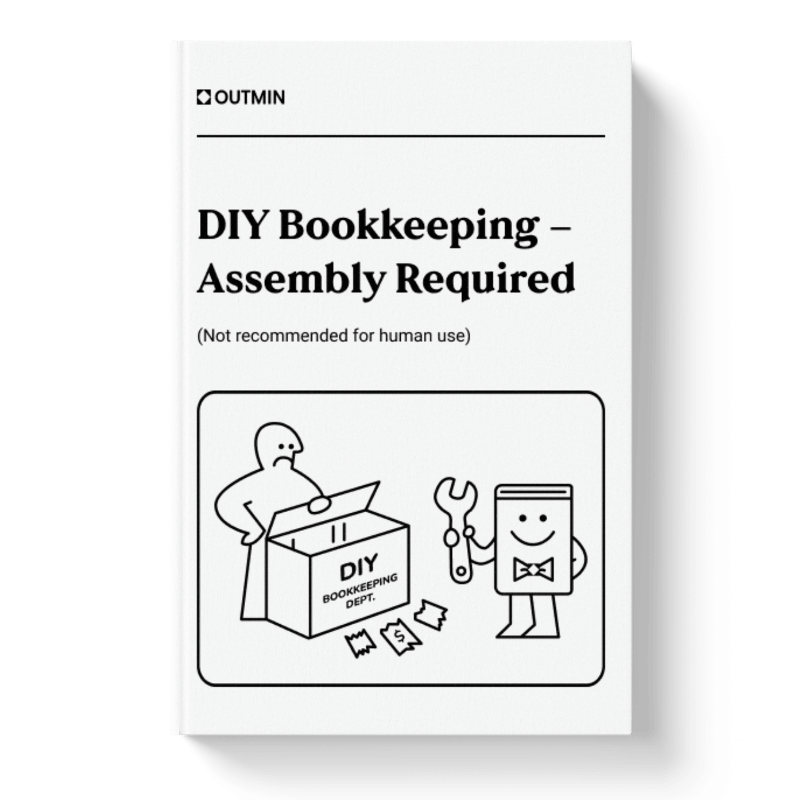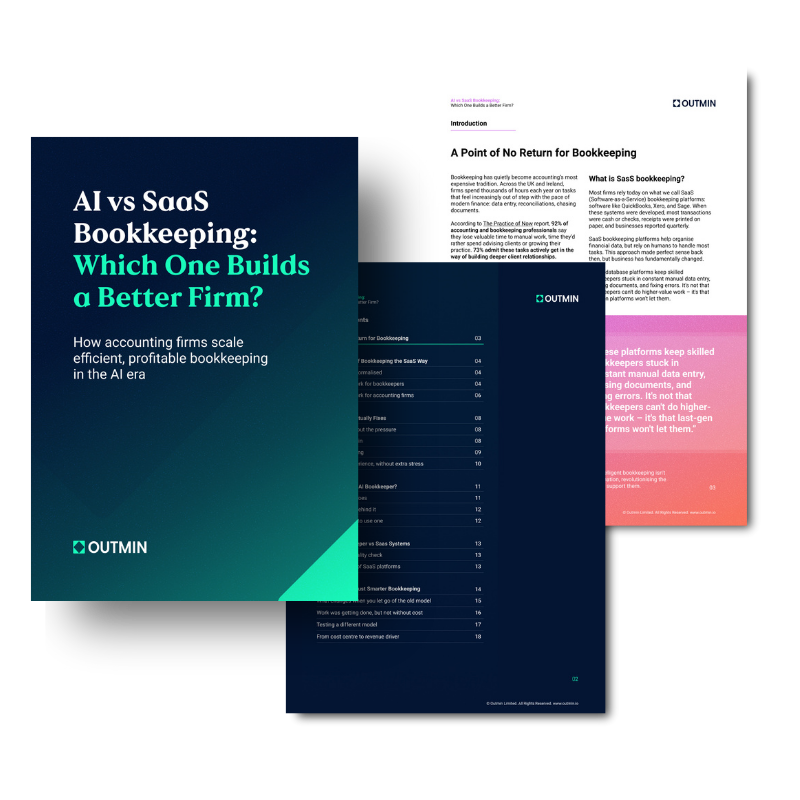October 23, 2025
The Hidden Cost of Invoice Chaos

Are Small Businesses Losing More Than Just Time?
Every few months, as VAT deadlines approach, the same predictable nightmare unfolds for thousands of small business owners. Emails to suppliers go unanswered. Invoice copies are scattered across inboxes, downloads folders, screenshots on phones, and paper receipts stuffed in drawers.
Entire evenings get consumed cross-referencing bank statements with purchase orders, trying to piece together a complete picture of business finances. It's exhausting and frustrating. And it's entirely preventable.
Research from Sage shows that “SMBs lose 24 days a year to financial admin, the equivalent of working 13 months but getting paid for just 12”. Chasing and organising invoices are among the most time consuming tasks.
Why Your Document System Is Working Against You
The issue isn't just that invoices need chasing. The entire system of how small businesses handle supplier documents has become fragmented and unsustainable.
Most businesses operate across multiple platforms, and none of them talk to each other:
- Bank transactions flow through one system
- Invoices arrive via email, supplier portals, screenshots, and physical post
- Payment processors like Stripe or Square generate their own records
- Point-of-sale systems produce daily reports
- All of these sources need reconciling against each other
The responsibility for connecting all these dots falls squarely on the business owner or a bookkeeper charging by the hour. Neither option is ideal when you're trying to actually run a business.
According to the Institute of Accountants & Bookkeepers, 40% of small businesses still use manual methods for financial record-keeping. This isn't because business owners enjoy spreadsheet archaeology. It's largely because traditional accounting software hasn't kept pace with how digital commerce actually works.
Tools like Xero and QuickBooks were designed for a world where transactions happened slowly and documents arrived in neat batches. They weren't built for businesses that process dozens of card payments daily, order from multiple suppliers weekly, and need real-time cash visibility.
When Paperwork Becomes a Business Problem
When invoices go missing or aren't properly filed, the consequences cascade faster than you'd think.
Immediate impacts:
- VAT returns become guesswork
- Year-end accounts take longer to prepare, costing more in accountancy fees
- Cash flow visibility disappears because you can't easily see what's been paid and what's outstanding
The financial toll: Research from the Department for Business & Trade shows that over 1.5 million businesses in the UK are affected by late payments each year. Businesses are owed an estimated £26 billion in late payments at any given time, averaging £17,000 per affected business. When you can't track what's outstanding, you can't chase what's owed.
Every hour spent chasing documents is an hour not spent chasing revenue. The maths isn't complicated, but it is brutal.
The mental load nobody mentions: Gabriel Larraz, who founded Broken Eggs restaurant in London, describes the stress vividly. "When VAT came around, it would take me literally three, four, five days to send all of the invoices to my accountant. I wasn't storing them properly – again, lack of time."
For someone running a restaurant, those are days that should be spent on menu development, staff training, or customer service. Instead, they're consumed by administrative archaeology, digging through emails and supplier portals to reconstruct a paper trail that should have been captured automatically in the first place.
Why the Usual Advice Doesn't Actually Help
The typical advice given to small businesses is either "hire a bookkeeper" or "use better software". Both suggestions miss the fundamental problem entirely.
- Hiring a bookkeeper doesn't solve the capture issue. Someone still needs to gather all those documents. Either the business owner is still chasing suppliers, or the bookkeeper is charging for that time. It shifts the burden but doesn't eliminate it.
- Traditional accounting software requires manual input. Even modern cloud platforms that connect to bank feeds still need users to upload invoices manually, match transactions by hand, and reconcile discrepancies one by one. They've digitised the ledger but not the document flow that feeds it.
- Specialist tools add complexity. Receipt scanners like Dext help at the margins, but they add another application to manage and another workflow to maintain. The result is tool sprawl rather than simplification, which is the opposite of what overwhelmed business owners need.
What Actually Solves the Problem
The businesses that have cracked this have done so by rethinking the entire document lifecycle, not just the accounting side.
Automatic capture at source: Instead of waiting for invoices to arrive and then figuring out how to store them, the best systems pull documents directly from where they originate. Supplier portals get connected. Email inboxes get monitored. Payment platforms feed transaction data automatically.
This approach eliminates the chasing phase entirely. When a supplier issues an invoice, it flows into the bookkeeping system without anyone needing to download, forward, or upload anything. No human intervention required.
Intelligent processing & reconciliation: Rather than leaving business owners to match bank lines with invoices manually, automation handles the routine cases. Payments to known suppliers get matched to their invoices. Recurring transactions get categorised based on patterns. Only genuine exceptions require human attention.
Gabriel's experience demonstrates the impact. The time he previously spent preparing for VAT dropped from four or five days to essentially zero. Books stayed reconciled continuously, so when the quarterly deadline arrived, everything was already in order.
The Ripple Effects of Getting This Right
When invoice chaos gets resolved, the benefits extend far beyond saved time.
- Better decision-making: Financial data becomes current rather than historical. A restaurant owner can see yesterday's takings reconciled against yesterday's costs, not last month's estimates against last month's expenses. That's the difference between steering and guessing.
- Reduced overwhelm: According to Simply Business, 56% of small business owners experience poor mental health. Removing the invoice management burden materially reduces feeling of overwhelm and stress. It's not just about efficiency, it's about mental bandwidth.
- Improved cash flow visibility: Business owners can see exactly what's been paid, what's outstanding, and what's due in the coming weeks. That visibility enables better purchasing decisions, more confident hiring choices, and clearer conversations with lenders or investors.
- Better relationships with accountants: Instead of spending review time chasing missing invoices, accountants can focus on actual accounting questions and advisory work. The quality of the service improves because the inputs are reliable, not because anyone is working harder.
How Outmin Approaches Invoices Differently
The core problem is that most accounting tools assume someone will do the document gathering work. They focus on what happens after invoices are captured, not on the capture itself. That's backwards.
Outmin was built to solve that specific problem. It connects directly to supplier portals and monitors dedicated email inboxes, pulling invoices and statements in automatically.
Bank feeds come through daily. Point-of-sale data flows in from systems like Square or Stripe. The platform reconciles everything continuously, matching payments to source documents without manual intervention.
For those inevitable paper receipts or one-off invoices, there's a mobile app. Snap a photo, and it's uploaded and processed instantly. No need to wait until you're back at a desk or remember to forward an email later.
When something genuinely needs attention, a system called Rex flags it with a specific question. Instead of wading through everything to find what's missing, business owners respond to targeted requests that take seconds to resolve. No archaeology required.
The result is what Gabriel experienced at Broken Eggs:
- Books that stay current without manual work
- VAT preparation that takes minutes instead of days
- Daily financial visibility instead of monthly guesswork
- Time freed up to actually run the business
For accountants working with clients on the platform, there's a practice portal showing reconciliation status across their entire book. They can see which clients are ready for review, what's missing, and drill down to source documents with a click. The work becomes faster and more reliable because the inputs are complete.
Time to Stop Tolerating the Chaos?
Invoice chaos isn't inevitable. It's a symptom of using tools designed for a previous era of business.
When document capture becomes automatic, reconciliation becomes continuous, and visibility becomes real-time, the administrative burden lifts. The technology exists today to eliminate invoice chasing entirely.
For small business owners across Ireland and the UK, the choice is straightforward. Spend evenings reconstructing paper trails, or spend them building the business. Three to five days saved every quarter adds up to more than time: it's the difference between running your business and being run by it.
Ready to see how automated bookkeeping works? Book a demo with Outmin.









